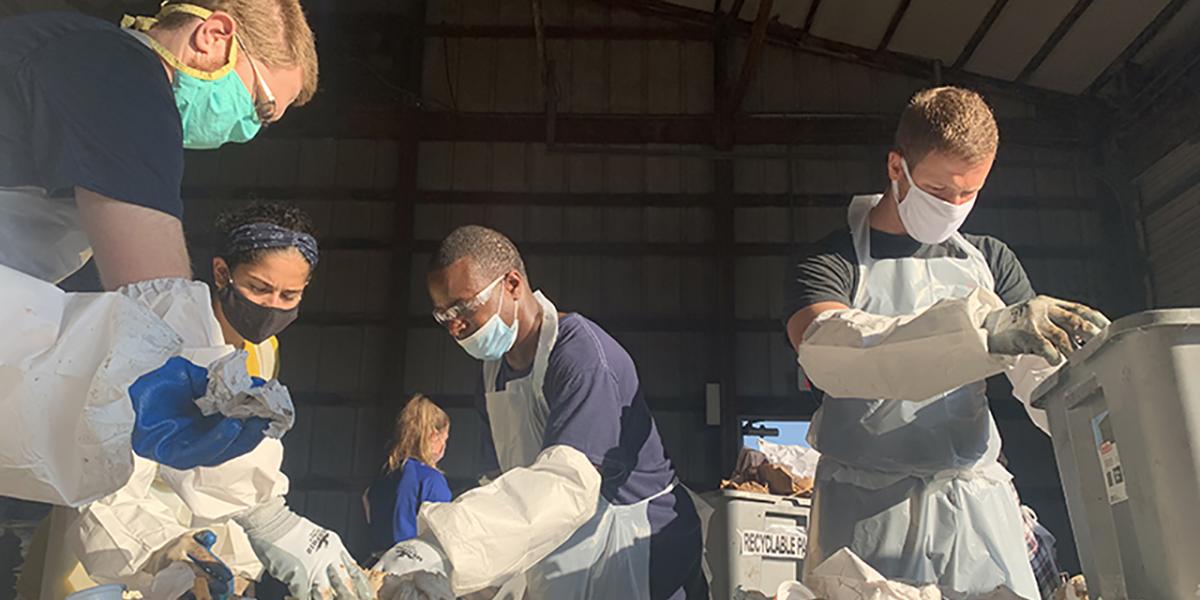The data collected will help identify the capture rate of recyclables, contamination rates, where new waste reduction programs, education, or infrastructure are needed, and classify commonly disposed items that can be replaced with reusable or recyclable alternatives.
“The first phase of the study will yield ‘waste profiles’ for the trash and recycling generated at 14 locations on campus representing different types of buildings,” said Molly Kathleen, FOD’s zero waste coordinator. “We will see results from residence halls, laboratories, administrative offices, academic spaces, food service establishments, outpatient care medical facilities, and special use buildings.”
Drivers from the Recycling and Refuse department collected loads from buildings around campus and brought them back to the sample staging area on Kenny Road. They emptied the samples into boxes, labeled each box by the building it came from and indicated if the sample came from the recycling or trash dumpster.
“Teamwork helped Recycling and Refuse Services achieve a goal that we could not have completed otherwise,” Kathleen said. “We are sincerely grateful to everyone who went above and beyond to help with the study!”
These samples were sorted into material categories, photographed, and weighed by the sorting team of student interns. The information they collected will help catalyze numerous new initiatives to accelerate Ohio State’s progress toward the zero waste goal.
“Recycling and Refuse Services hopes the opportunity to be involved in the study was beneficial for the students,” Kathleen said. “They gain real world experience working alongside professional sustainability consultants and see firsthand how materials are managed at the university.”
The waste sort was one of the largest Kaiya Weston, an ESS intern, has been a part of.
“This waste sort was really efficient,” Weston said. “The amount of waste we were able to sort through was incredible and we also learned the reasoning behind why things go into certain waste streams.”
The second phase will be completed in Spring 2022 after running a “Recycle Right” education campaign, developed through Ohio State’s collaboration with the Solid Waste Authority of Central Ohio (SWACO). To learn more about zero waste at Ohio State, visit fod.osu.edu/zero-waste.

